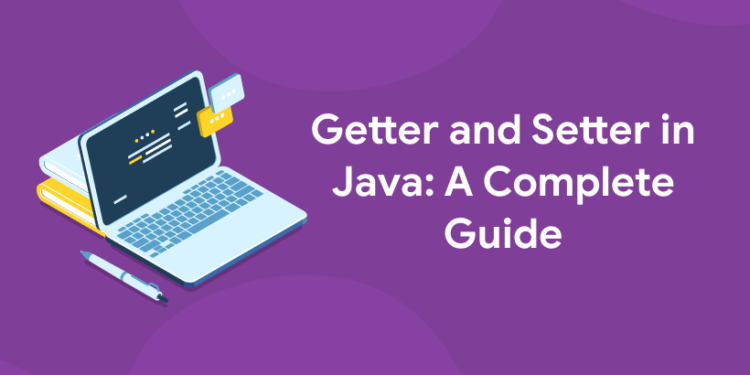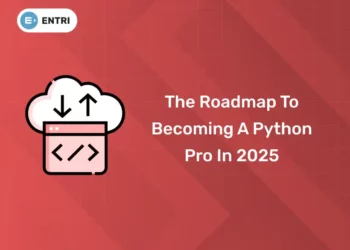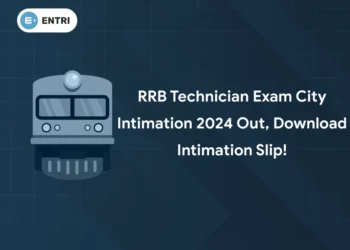Table of Contents
Java makes use of access modifiers to control the visibility of members (variables and methods) declared in classes, interfaces, and other types. The main purpose of an access modifier is to limit the accessibility of these members to certain components in the software system that has been developed by the programmer or that need to be accessed by this system (e.g., Java compiler). This article intends to provide you with an overview of getter and setter in java methods as well as their implementation in the Java programming language. Java, the mother of all languages, has been adding new features in every version that comes out. One such feature added in Java 8 is the support for the package level get and set method in java in java accessors.
It has stirred up quite a lot of discussion in the Java community as to whether it’s worth using or not, especially because most people do not follow best practices when it comes to using this feature. In this article, we will take a closer look at get and set method in java accessors and see how to use them properly. Java is the most popular programming language in the world. It has more than 9,000 APIs and 13,000 classes to accomplish almost anything. When you are using Java API or when you are writing your own API, you need to have some idea about Getter and Setter in Java. This complete guide will help you to easily understand what Getter and Setter are? Why it is required to have getters and setters? How we can implement getters and setters in our own classes?
To know more about java programming in the Entri app!
What Is a Property?
Firstly, it is a part of the class. We can think of a property as an accessor method that’s being attached to its class. Similar to getters and setters, properties are used to control access to attributes defined within a class. Point 2. Examples of Properties in Action: Property declaration is accomplished by attaching get or set at the end of a variable’s definition…Point 3. Create Your Own Property Using setters And Getters (Java Example): To create your own property, you need two things — property keyword and getter & setter methods…Point 4. Difference Between The Methods In a Class: The difference between these methods in a class is that when get and set method in java are written separately, they have no limitations for using each other. For example, we can use one to read values from the other object’s fields. But if we write them together with property keywords, they have limitations for using each other.
Point 5. Defining With Final Field Attribute: In Java programming language, if you want to protect from overriding or make something constant, then use the final field attribute before defining variables. When the final is added to a field, it indicates that this value cannot be changed after initialization. If this attribute is not applied, then variables will not be protected from changes made later on in the program.
Point 7. What Is Super Method?: The super method provides more customization than interface methods because it works outside of interfaces while interface methods are always inside interfaces.
Enroll in our latest java programming course in the Entri app
When Should You Use Getters?
1: What is the default value of a boolean in Java?
The primary use of getters is when you need to define a public API that exposes an object’s state. This could be anything from defining a public API for retrieving data to converting complex numbers into strings. There are other design patterns that can achieve many of these same goals, however; if you have an internal API for your classes, you should use private getters, or consider defining static utility methods instead of getters and setters. Public getters are most appropriate when there are no other options. You can also use them when you want complete control over how users interact with your code. It may seem excessive at first, but it can save time by preventing unexpected errors down the line. For example, say we’re creating a class called Jedi where all the abilities are stored as ints: We could expose our abilities through getters such as getStrength() and getAbilityToDeflectBlasts(). Doing so will allow us to add new abilities without breaking the old ones and let us easily change values without worrying about potential errors such as accessing uninitialized variables.
Get free placement assistance with the Entri app
The exception to this rule is when it comes to very simple objects like String, Integer, and Double. If these types of objects don’t require any special functionality beyond storing their value, then you might want to store the values in fields rather than getters/setters. Point 3. Should You Use Setters?: You’ll find that using setters generally involves less risk because they limit access to only one side of the equation: The receiver. In contrast, getters provide easy access both ways, meaning anyone can change what’s inside an object as well as read its content. Thus if you want more control over who has access to modify a particular property of your class, you’ll need to create a setter function and make sure that function has at least one parameter (it doesn’t matter which one) with private visibility so it cannot be accessed outside the class itself.
Get the latest updates on java programming in the Entri app
Never Declare Private Variables Without Getters/Setters!
One of our pet peeves when using programming languages like Java is dealing with variables that don’t have getters or setters. Why? Well, for one, we can’t reassign them. But more importantly, it’s difficult to understand what such a variable is for! Where does it come from? Where does it go? We won’t know without asking our friendly neighborhood developer first. So follow these four simple rules to ensure you’re declaring all your variables correctly: 1) public 2) static 3) final 4) no getters or setters. If you’re following these rules then chances are you’re writing cleaner code that’s easier to read and maintain, too! However, there are exceptions. In those cases where an internal object needs to be able to access private variables outside the class itself, simply add public getters and setters (no need for private ones).
How to Design Properties
Properties are simple to use but sometimes creating a good design can be tricky. One of the things that can help with deciding how to create a property is understanding how they work under the hood. Knowing how properties work helps you know how to set them up, whether to create getters and setters or just give them direct accessors, when to not use one at all, what ways you should consider using instead, and more! This is a short (but comprehensive) guide on getter/setter implementation design. You’ll learn about the key terminology as well as some of the best practices for implementing your own getter/setter pair. Start off by asking yourself these three questions: 1) What do I want to expose? 2) How much information do I want to expose? 3) Who am I exposing this information to? If you’re only going to expose a few values, it might make sense to provide getters and setters which provide accessors for only those values. On the other hand, if you’re exposing many values from an object then it may make sense to include both getters and setters which provide read-only accessors as well as write accessors. It’s important that any field that isn’t meant to be changed is declared final so that it cannot be modified outside of the class itself. Finally, any fields declared private will not have their value accessible outside of the class. Make sure that each variable has a default public constructor with no arguments if you don’t plan on passing any parameters into it during instantiation. If a variable needs to be initialized before being accessed, either during instantiation or before being used, then implement the init() method. The code below shows a simple example of accessing data within a class through getters and setters. When writing code in Java, there are two methods called getXXX() and setXXX(), respectively used for reading and writing data where XXX is replaced by the name of the field such as name or age.
Get the latest updates on java programming in the Entri app
Point 6. How to Test Properties?
The process of testing properties in a program involves creating an instance of a class and then running that instance through various tests to confirm whether its properties are working as expected. In order to test a property, it needs to be made accessible from the outside. This can be done by making your methods public or using access modifiers. You can also do it by creating variables with private, protected, or package-private accessibility inside your classes. The latter is not very recommended as it makes testing more difficult while providing no extra benefits over public methods or variables. The former (using public methods) is acceptable but should be used only when needed because it affects your class design. If you have complex logic, encapsulating it into one method will make debugging easier and result in better readability. Mention the downside of this approach in regards to inheritance.
Private methods can’t be accessed directly by external classes; they need to use the getter and setter pattern.
Getters allow us to extract information about the object’s state; they don’t affect any object’s state other than returning data.
Setters allow us to change an object’s state; they don’t just return data as getters do, they actually alter the internal state of the object itself.
Enroll in our latest java programming course in the Entri app
Conclusion
Java is a very powerful language. It has various features which enable you to write better code for complex software systems. I hope that after reading my post, you now have a better understanding of how to use getters/setters effectively in your applications. You should make it a habit to always use them when appropriate. They can save you from many issues related to mutability down the road as your application grows in size and complexity. If you follow my advice, I think it will not be long before you start finding more bugs that can be caught by using these two simple concepts properly. If you liked what I wrote here, please share it with others by clicking one of those buttons below. Thanks! Please click Share below if you found this blog post helpful! If you are interested to learn new coding skills, the Entri app will help you to acquire them very easily. Entri app is following a structural study plan so that the students can learn very easily. If you don’t have a coding background, it won’t be any problem. You can download the Entri app from the google play store and enroll in your favorite course.











